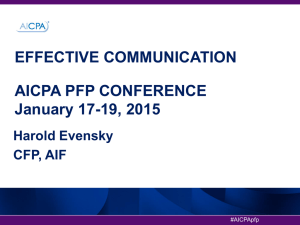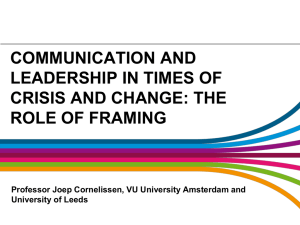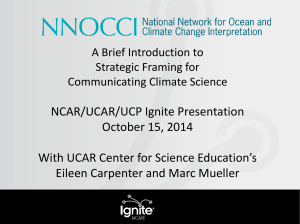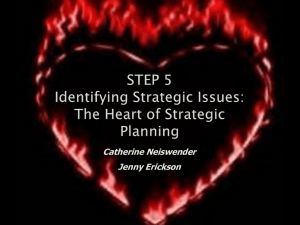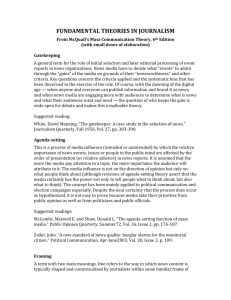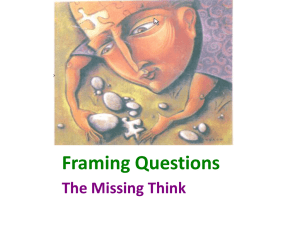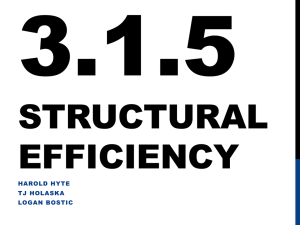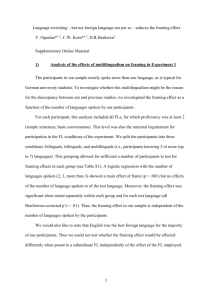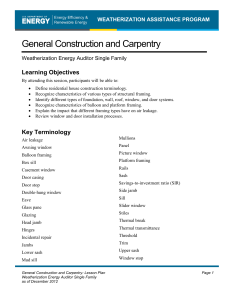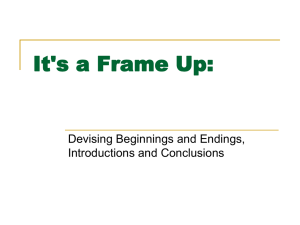Agenda Setting
advertisement
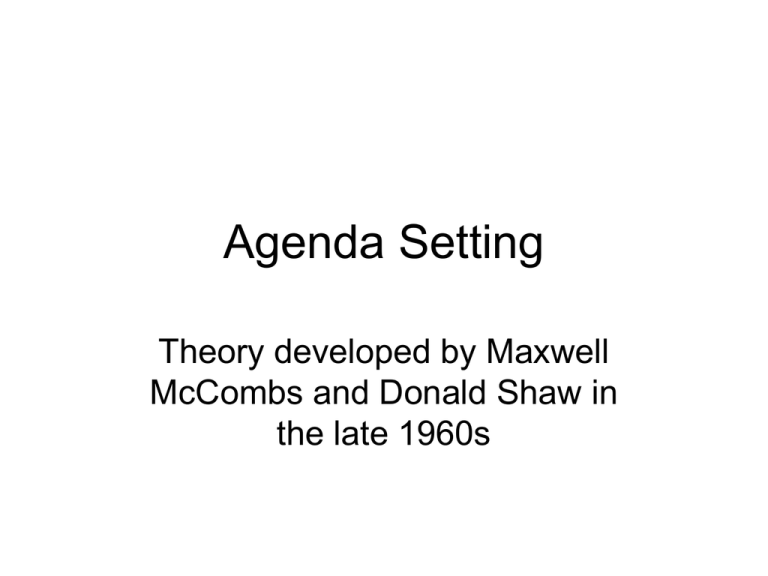
Agenda Setting Theory developed by Maxwell McCombs and Donald Shaw in the late 1960s • McCombs and Shaw argued that the “Mass media have the ability to transfer the salience of items on their news agendas to the public agenda.” As they put it : “We judge as important what the media judge as important.” Agenda Setting This idea was not entirely new and can be traced back to the work of the Walter Lippman who claimed that the media act as mediators between “the world outside and the pictures in our head” Agenda Setting Political scientist Bernard Cohen observed “The press may not be successful much of the time in telling people what to think, but it is stunningly successful in telling them what to think about.” Agenda Setting • As a theory agenda setting represented a shift from the limited effects paradigm that was dominant at the time because it questioned Lazarsfeld’s Selective Exposure thesis which argued the media merely reinforced or amplified exisiting beliefs Agenda Setting • McCombs and Shaw’s study defined media agenda by studying coverage of issues in nine print and broadcast sources. • They used position and length of story as main criteria of prominence in print media and placement in first three stories or a discussion over 45 seconds for broadcast Agenda setting • • • • • • Issues prominent in the media were: Foreign policy Law and Order Fiscal Policy Public Welfare Civil Rights Agenda Setting • To determine public’s agenda they asked voters to identify what they considered to be the top issues in the 1968 campaign between Nixon and Humphrey • They compared aggregate data from voters with media content and found that the issues and the ranking of the issues was nearly identical on both lists. Agenda Setting McCombs and Shaw hypothesized that Media agenda Voter’s agenda But could it be ? Media agenda Voter’s agenda How can this hypothesis be proved ? Agenda Setting Using a correlational time analysis found that public’s concerns trailed the media’s agenda Further support for the agenda-setting thesis was provided by an experiment run by Yale researchers Iyengar, peters and Kinder Agenda Setting • Showed newscasts to three groups of New Haven residents for four days and had them fill out a questionnaire • Each group saw a different version of the newscast with a daily focus on national defense/inflation/environment • Result was the upward movement of those issues on the people’s lists of concerns Agenda Setting Who sets the agenda for the media ? • Intermedia effect • Events • Public relations professionals • Interest aggregations Agenda Setting Who is most likely to be affected by the agenda-setting function of the media ? Agenda Setting • McCombs and Shaw have argued that the people who have a willingness to let the media shape their thinking have : • A high need for orientation or index of curiosity stemming from high relevance and uncertaintly Framing By the mid-1990s, agenda-setting theory evolved and scholars began to argue that the media do influence the way we think as a result of a specific process known as framing. Framing • What is framing ? • According to James Tankard, a media frame is • “ The central organizing idea for news content that supplies a context and suggests what the issue is through a use of selection, emphasis, exclusion and elaboration.” • "News frames are almost entirely implicit and taken for granted. They do not appear to either journalists or audiences as social constructions but as primary attributes of events that reporters are merely reflecting. • News frames make the world look natural. They determine what is selected, what is excluded, what is emphasized. In short, news presents a packaged world." Entman’s Analysis of Framing of of KAL 007 and Iran Air 655 • Similarly complex and tragic events, yet framing differs dramatically • Differences in quantity of coverage • • • • KAL 007 (51 pages in Time and Newsweek)/ NY Times (286 stories and WaPo 169 stories) Iran Air 655 (20 pages in Time and Newsweek)/ NY Times (102 stories and WaPo 82 stories) Entman’s Analysis • Significant differences in images and language in treatment of KAL 007 and Iran Air 655. • KAL Covers—Shooting to Kill and Murder in the Air • Iran Air—Why it Happened? And What went wrong? • Differences in coverage of victims • Attribution of responsibility • Use of moral vs. technical frame Examples of Framing Rats Bite Infant An infant left sleeping in his crib was bitten repeatedly by rats while his 16-year-old mother went to cash her welfare check. A neighbor responded to the cries of the infant and brought the child to St. Joseph's Hospital where he was treated and released into his mother's custody. Examples of Framing Rat Bites Rising in City's "Zone of Death“ Rats bit eight-month-old Michael Burns five times yesterday as he napped in his crib. Burns is the latest victim of a rat epidemic plaguing inner-city neighborhoods labeled the "Zone of Death." Health officials say infant mortality rates in these neighborhoods approach those in many third world countries. A Public Health Department spokesman explained that federal and state cutbacks forced short staffing at rat control and housing inspection programs. Examples of Framing Rats Bite Infant: Landlord, tenants dispute blame • An eight-month-old Milwaukee boy was treated and released from St. Joseph's Hospital yesterday after being bitten by rats while he was sleeping in his crib. Tenants said that repeated requests for exterminations had been ignored by the landlord, Henry Brown. . Brown claimed that the problem lay with the tenants' improper disposal of garbage. Framing the War in Afghanistan • Freedom v. Terror (overall package) • Core frame—Issue is will we allow evil to prevail and destroy civilization and rule the world • Humanitarian Intervention (overall package) • Core frame—Issue is will the U.S. help the people of Afghanistan • Quagmire (overall package) • Core frame—Issue is will we get stuck in another expensive war ?
